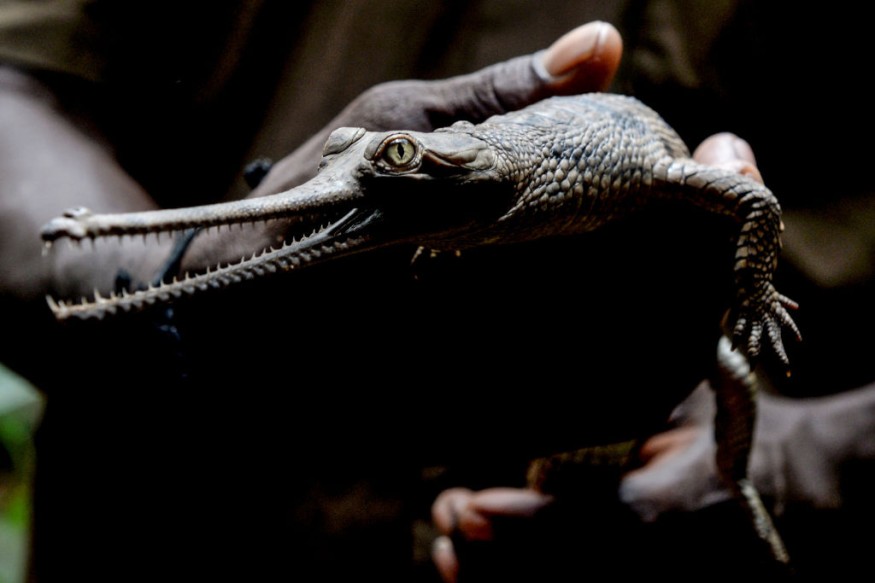
A remarkable unusual birth of four gharial crocodile hatchlings, a critically endangered species that the Fort Worth Zoo has attempted to breed for more than ten years, was announced to be a groundbreaking conservation success on Thursday.
Gharial crocodiles have only ever given birth in captivity twice before in US history. In South Asia, there are just around 200 breeding-age adults still living in the wild. In North America, nine institutions house about 35 people.
Critically Endangered Gharial Crocodile
Vicky Poole, the Fort Worth Zoo's ectotherm curator, noted that gharials, a critically endangered crocodilian species, serve as keystone species with crucial roles in their ecosystem. Sadly, they are the world's most endangered crocodilians. The zoo's recent success in hatching four gharials is a significant milestone, quadrupling the US-born gharial count.
Gharials, on the brink of extinction in the 1970s, face threats from habitat loss, unsustainable fishing, and hunting. Their historic range encompassed Bangladesh, Bhutan, India, Myanmar, Nepal, and Pakistan but now only exists in Nepal and northern India. These large crocs grow up to 20 feet with distinctive long, razor-toothed snouts. The zoo's dedicated efforts include adjusting nesting conditions and incubation temperatures to crack the breeding code for these remarkable creatures.
Gharial Crocodiles in Captivity
The newest gharials have not yet been revealed to the public just yet. The hatchlings are spending a lot of their time in the water and have already begun collecting their own fish, according to Zac Foster, a supervisor of ectotherms. They haven't been given names yet, but according to Foster, the team will give them names when the gharials become older and further along in the training process.
The Fort Worth Zoo recently announced the birth of 4 critically endangered baby gharial crocodiles. According to reports, there are estimated to only be 200 reproducing adults remaining in the wild. pic.twitter.com/c0JFfSN8GI
— Breitbart News (@BreitbartNews) September 1, 2023
According to Foster, the hatchlings' different sizes can be used to distinguish them. They are all unique, exactly like a person's fingerprint. Foster explains that no two gharial would have the same kind of banding patterns, making it possible for zoo professionals to distinguish between them.
There are currently three adult female gharials along with an adult male living in the Fort Worth Zoo.
Also Read : Florida Alligator Brooke Gets CT Scan with Help of Six Vets, Strappy Board Following Ear Infection Symptoms
The two mothers, Snaggle and Raani, as well as the father, Big Boy, produced the four hatchlings. The other female, Wally, according to Poole, deposited eggs that did not hatch, but they are hopeful for better outcomes the next year.
According to Poole, now that they are discovering what works, they can impart it to other institutions.
Poole explains that it is crucial to understand how to properly raise gharials in captivity as well as their reproductive cycles, breeding methods, and medical needs. Other conservation initiatives that the herpetarium is involved with include those for Texas horned lizards, Puerto Rican crested toads, Chiricahua leopard frogs, and Panamanian golden frogs. The herpetarium has a facility where, in 2021, scientists successfully in vitro fertilized the first Houston toads.
The momentous announcement on Thursday follows the zoo's summer grand inauguration of its newest habitat, Predators of Asia and Africa. The third phase of "A Wilder Vision," a $130 million, four-phase initiative to develop more stimulating and naturalistic habitats for animals as well as additional opportunities for visitors to engage with them, is the new habitat.
Related Article : First Crocodile Virgin Birth Reported in Costa Rica Zoo, Stillbirth DNA at 99.9% Match
© 2025 NatureWorldNews.com All rights reserved. Do not reproduce without permission.





